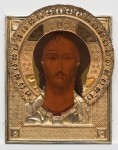Religious Images of the Christian East
(Byzantine Icons)
Ridley-Tree Gallery
11-27-2013 through 3-16-2014
Religious Images of the Christian East Checklist (as of 8-13-2013)
Religious Images of the Christian East Labels
Overview: Social Media, the Spiritual Version


Unknown Greek – Christ, the Virgin Mary, St. John the Baptist, and St. Nicholas
Unknown Russian – Jesus Christ
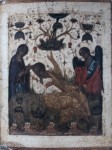
Unknown Russian – Jesus Christ, The Wakeful Eye
.
.
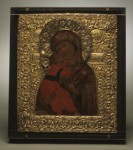
Unknown Russian – The Virgin of Vladimir
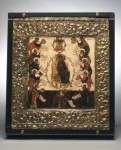
Unknown Russian – Praises to the Mother of God
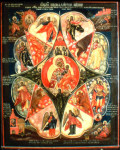
Unknown Russian – The Virgin of the Burning Bush (R)
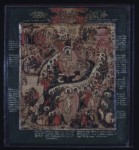
Unknown Russian – The Resurrection of Jesus Christ
.
.
.
Portraits of Jesus Christ, His mother and His saints invoke the presence of God, to whom every Christian prayer is addressed. Before the Reformation, such images were habitually used by believers all over Europe, both in church and in private. The custom of painting them on wood originated in present-day Egypt, Syria and Turkey, later spreading from there to Italy and further north.
Orthodox Christians in Greece, Russia and elsewhere refer to such paintings as icons. In order to make the holy figures easily recognizable, icons usually repeat familiar compositions on the basis of earlier models. Some such models are supposedly derived from authentic, miraculously produced portraits of Christ. Others go back to images that have frequently helped those who prayed in front of them.
The examples in this gallery illustrate the traditionalism of icon painting: even though they were made in the early modern and modern periods, ca. 1500-1900, their artistic style does not differ greatly from that of the fourteenth-century Italian panel exhibited nearby.
– Religious Images of the Christian East wall text, 2013

